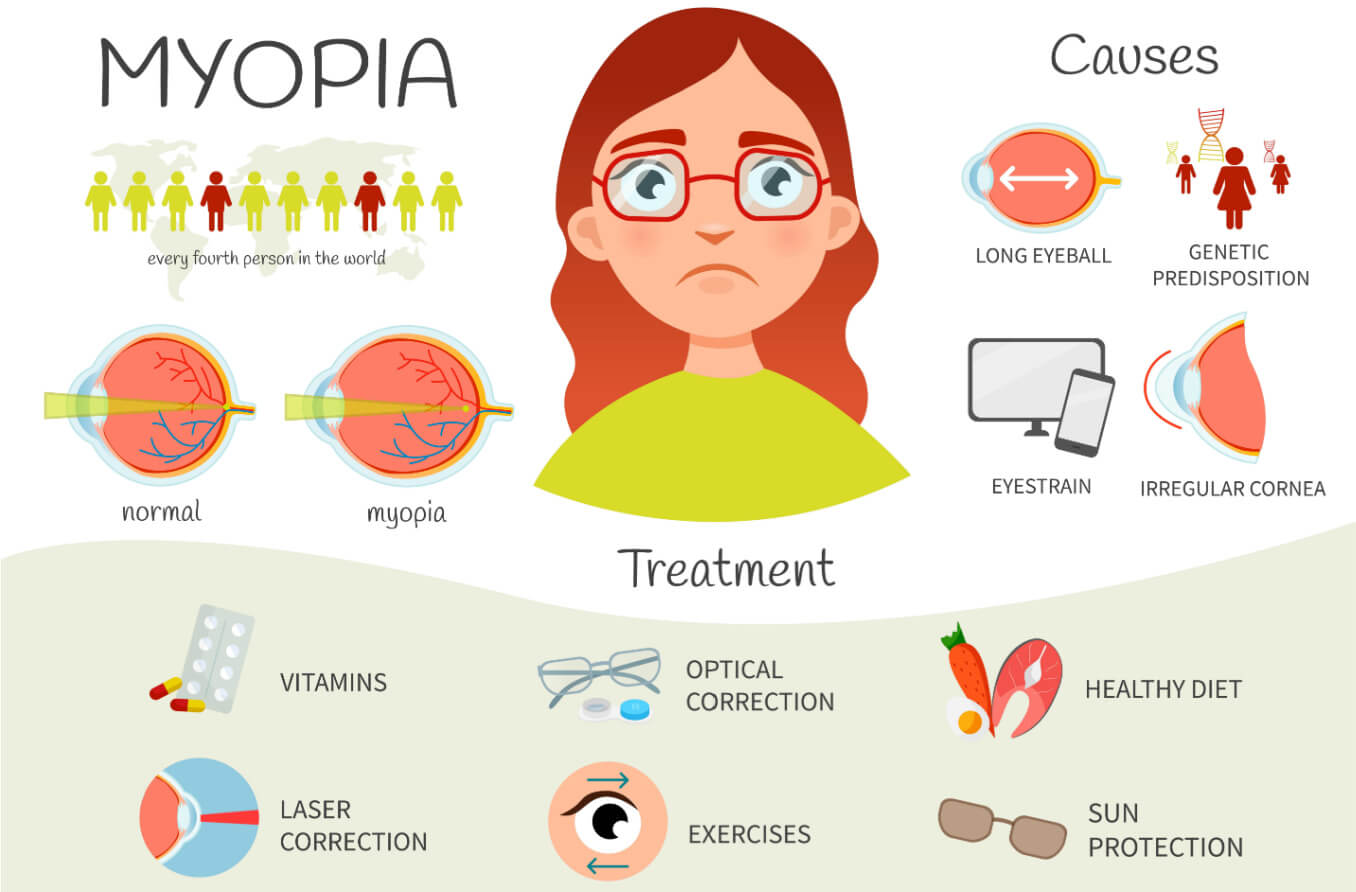Myopia: Spectacle lenses and other correction options

People who are short-sighted have a refractive error called myopia. Myopia correction refers to all the options available for clearing their blurry distance vision. These include glasses, contact lenses and refractive surgery. A myopia correction lens is called a “minus lens.”
Myopia is a very common refractive error, people with myopia can usually see close objects much more clearly than distant objects. It's called short-sightedness because instead of the light focusing on the retina, it falls "short" casuing blurry distance vision.
For most people, myopia is caused by the eyeball growing too long during childhood. It can also be due to the cornea or lens being curved too steeply. In rare cases, a person can be short-sighted if the lens is too close to the cornea.
Each of these factors can cause light that enters the eye to focus in front of the retina instead of directly on it. They cause the eyes to have a stronger focusing power than eyes without myopia.
This focusing error is what causes blurry distance vision. A lens that corrects myopia is called a “minus lens” because it reduces this focusing power.
Options for myopia correction include:
Standard prescription glasses
Standard prescription contact lenses
LASIK and other refractive surgery (after the myopia stops progressing)
Myopia usually begins in early childhood but it can continue to get worse throughout childhood and even into the early adult years. This is called myopia progression.
LASIK and other types of refractive surgery are not good options until after myopia stabilises. This is typically sometime between the ages of 15 and 28.
It's very important for kids with progressive myopia to wear up-to-date lens prescriptions. Wearing standard corrective lenses that are too weak can cause myopia to progress more quickly.
It's also important to know that standard corrective lenses don't stop myopia from getting worse. Special myopia control methods are the only way to reduce myopia progression. Myopia control can be very effective, but it only works while short-sightedness is still progressing.
Myopia control methods include:
Myopia control glasses
Myopia control contact lenses
Orthokeratology (effective as both myopia correction and control)
90 minutes of outdoor sunlight per day
Frequent vision breaks during near-work activities
The best first step in managing and correcting myopia is early detection. eye exams are key and should begin when a baby is around 6 months old.
If it's been more than 2 years since your or your child's last eye exam, schedule one today with an optometrist near you.
Borish's clinical refraction. Benjamin WJ & Borish IM. St. Louis Mo: Butterworth Heinemann/Elsevier. 2006.
Update and guidance on management of myopia. European Society of Ophthalmology in cooperation with International Myopia Institute. European Journal of Ophthalmology. May 2021.
IMI – Interventions for controlling myopia onset and progression report. Investigative Ophthalmology & Visual Science. February 2019.
Slowing myopia progression in children. Review of Optometry. November 2012.
Recent updates on myopia control. Current Opinion in Ophthalmology. July 2019.
Page published on Tuesday, 17 March 2020
Page updated on Friday, 11 August 2023
Medically reviewed on Monday, 23 May 2022






